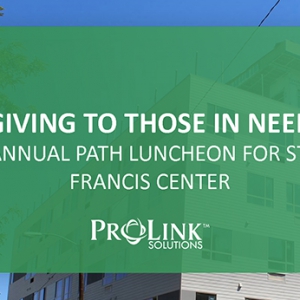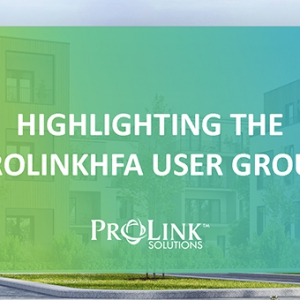Maximizing Compliance and Asset Management with Good Data
Last week at NCSHA’s Housing Credit Connect 2023, Ryan Kim, VP of Professional Services at ProLink Solutions, was featured as a guest panelist during the session titled Maximizing Compliance and Asset Management with Good Data. Ryan covered best practices for identifying good data sources, ensuring protocols, and expediating verification of tenant data to create monitoring efficiencies, as well as enhancement of program compliance.
Step 1: Data Collection
In today’s data-driven world, it’s crucial to identify good data sources, implement robust security protocols, and expedite the verification of tenant data. Often, very sensitive types of information are collected from tenant data:
Household information:
- Age
- Gender
- Race/ethnicity
- Student status
- SSN
Financial information:
- Household income
- Assets
Ensuring the security and safety of personal tenant data starts at the owner/agent level. At this level, there needs to be good internal control in place in order to safeguard this data, and any property management software needs to be safe and secure.
Step 2: Data Transfer
Data is often transmitted from owner/agents to state housing finance agencies (HFAs). When data transfers are taking place between two different organizations, there are a few things to consider:
- Data Transfer Format (File Format): How is data getting submitted? Is it being submitted physically or digitally? What kind of digital format is being used? Excel, CSV, online portal, fillable PDF, or something else?
- Data Transfer Method: Is there a template? Do you upload to the cloud? Is it emailed to you as an attachment?
As you evaluate Data Transfer Format and Method you have in place at your agency, think about the following:
- Is the Format and Method designed to safeguard data?
- Does the Format and Method have data validations built in? By having data validation process built into your data collection process, you will save a lot of time.
Step 3: Data Processing and Outputs
Once you have received tenant data from owner/agents and it has been validated and cleaned, then the data should be stored within your system, within some form of internal database used by your agency.
This data needs to be:
- Encrypted
- Backed up nightly
- Tested against any vulnerabilities or cyberattacks
All these things can be done more effectively once your database is moved to cloud with security, back-up, testing, disaster recovery, all built-in, provided by the cloud host; whether it’s Amazon Web Services or Microsoft.
Another alternative is looking for SAAS solution, Software-As-A-Service. ProLinkHFA is one such solution that stores your data in the cloud safely and securely, allowing you to access your data through our web application.
What’s Next?
Now that you have all of your tenant data in your database, how do you effectively perform compliance monitoring of hundreds of properties containing thousands of households?
The best way to an effective compliance monitoring is to have a system where you can upload and store HUD Income and Rent Limit data annually, store your compliance requirements at each property, and run all individual household data against these parameters. The system should then be able to flag potential compliance violations for you.
The system should indicate what kind of violations occur – such as over income, missing recertification, minimum set-aside, and applicable fraction. All these violations being detected directly by the system helps you create and populate the Form 8823 so you can submit it to IRS accurately and in a timely manner.
Efficiently monitoring your tenant data requires a strategic approach that encompasses data source identification, security protocols, and numerous verification processes. But, by adopting the aforementioned strategies, your organization is better equipped to enhance monitoring efficiencies, strengthen data security, and ensure program compliance.
Embracing these best practices will not only protective sensitive tenant information but it will also build trust and credibility within the industry. Remember, data is a valuable asset, and handling it responsibly is the key to success in the affordable housing landscape.







Leave a Reply
Want to join the discussion?Feel free to contribute!